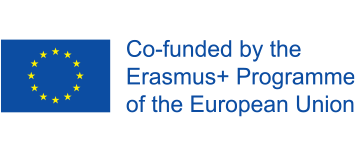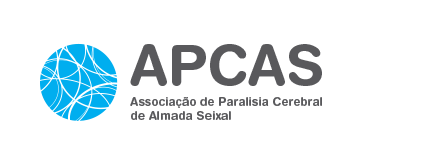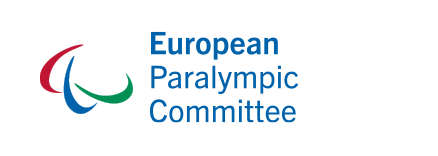REFERENCES
INTERVENTION SUPPORT MATERIAL GUIDE(S)
Australian Sports Commission Disability Sport Unit (2018). Using TREE. Available: Link
BISFed (2016). Boccia International Sports Federation. Available: www.bisfed.org
Black, K., and P. Stevenson. 2011. The Inclusion Spectrum. Available: Link.
Boccia World (2016). Boccia World. Available: www.bocciaworld.org/
Bronikowska, M. & Groll, M. (2015). Cultural aspects of Traditional Sports and Games. Recall: Games of the Past – Sports for Today.
Bronikowska, M., Petrovic, L., Horvath, R., Hazelton, Al., Ojaniemi, A., Alexandre, J. & Silva, C. (201). History and Cultural Context of Traditional Sports and Games in Selected European Countries. Recall: Games of the Past – Sports for Today.
Bulgarelli, D. & Bianquin, N. (2017). Conceptual Review of Play. In V. Play development in children with disabilities. DOI: 10.1515/9783110522143-005.
Bunker, L. (1991). The Role of Play and Motor Skill Development in Building Children’s Self-Confidence and Self-Esteem. The Elementary School Journal. 91 (5).
Carvalho, F., Carvalho, J., Parreira, J. & Januário, N. (2016). Boccia. In V. APCAS-Associação de Paralisia Cerebral de Almada Seixal (Eds.) Desporto com Sentido. Seixal: APCAS.
Cazeiro, A. & Lomônaco, J. (2011). Concept Development by Children with Cerebral Palsy: A Study about the Influence of Playful Activities. Psicologia Reflexão e Crítica. 24(1):40-50.
Cerebral Palsy International Sport and Recreation Association [CPISRA] (2019). Boccia. Available: www.cpisra.org
Davis, W. E. & Burton, A. W. (1991). Ecological task analysis: translating movement behavior theory into practice. Adapted Physical Activity Quarterly, 8, 157-177.
Doctoroff, S. (2001). Adapting the Physical Environment to Meet the Needs of All Young Children for Play. Early Childhood Special Education. 29(2).
European Commission (2017). Progress Report on the implementation of the European Disability Strategy (2010 – 2020). Available: Link
Filho, P. (2003). A Psicomotricidade Relacional em Meio Aquático. Barueri-SP: Manole.
Foley, J., Tindall, D., Lieberman, L. & Kim, S. (2007). How to Develop Disability Awareness Using the Sport Education Model. Journal of Physical Education Recreation & Dance. 78(9):1-60
Fonseca, V. (2001). Fundamentos psicomotores da aprendizagem da natação para crianças. In V. Fonseca (Ed), Psicomotricidade – perspectivas multidisciplinares. (pp. 87-98). Lisboa: Editora Âncora.
Gielen, M.A. (2005). Play, toys and disabilities: the Bio-approach to designing play objects for children with various abilities. Proceedings of the 4th International Toy Research Association world congress, Alicante, Spain, 2005.
Humpel, N., Owen, N. & Leslie, E. (2002). Environmental factors associated with adults’ participation in physical activity. Am J Prev Med, 22(3).
Hutzler, Y. (2007). A systematic Ecological Model for Adapting Physical Activities: Theoretical Foundations and Practical Examples. Adapted Physical Activity Quarterly, 24, 287-304
International Halliwick Association (2000). The Halliwick Concept. Available: halliwick.org/about
International Paralympic Committee [IPC] (2019). Boccia. Available: www.paralympic.org
Kelly, M. & Darrah, J. (2005) Aquatic exercise for children with cerebral palsy. Developmental Medicine & Child Neurology. 47, 838–842. Doi: 10.1017/S0012162205001775
kiuppis, F. (2016). Inclusion in sport: disability and participation. Sport in Society. DOI: 10.1080/17430437.2016.1225882.
Koldoff, E. & Holtzclaw, B. (2015). Physical Activity Among Adolescents with Cerebral Palsy: An Integrative Review. Journal of Pediatric Nursing, 30, 105–117.
Martin, J., Alves, M. & Duarte, E. (2012). Análise do Processo Inclusivo de Pessoas com Deficiência no Clube Esportivo: Um estudo de Caso. Revista da Sobama, 13, 1.
Martini, M. & Salomão H. (2007). A importância do lúdico na educação infantil: Enfocando a brincadeira e as situações de ensino não direcionado. O Portal dos Psicólogos.
Misener, L. & Darcy, S., (2014). Managing Disability Sport: from athletes with disabilities to inclusive organizational perspectives. Sport Management Review, 17, 1-7.
Misener, L. (2014). Managing disability sport: From athletes with disabilities to inclusive organisational perspectives. Sport Management Review, 17(2014), 1-7.
Moniz Pereira, L. & Rosado, A. (2016). A Inclusão na Educação e no Desporto. In V. APCAS-Associação de Paralisia Cerebral de Almada Seixal (Eds.) Desporto com Sentido. Seixal: APCAS.
Moniz Pereira, L. (2016). Adaptar para Participar e Incluir. In V. APCAS-Associação de Paralisia Cerebral de Almada Seixal (Eds.) Desporto com Sentido. Seixal: APCAS.
Montenegro, M. & Sarmento, P. (1992). Adaptação ao meio aquático: Um projecto educativo. Lisboa: Associação Portuguesa de Técnicos de Natação.
Newell, K. M. (1986). Constrains on the development of coordination. In M. G. Wade & H. T. Whiting (Eds.). Motor development in children: Aspects of motor coordination and control. Netherlands: Nijhoff.
Pessoa, P., Yázigi, F. & Gama, R. (2016). Natação. In V. APCAS-Associação de Paralisia Cerebral de Almada Seixal (Eds.) Desporto com Sentido. Seixal: APCAS.
Rafael, C., Gomes, L., Duarte, E., Barreto, S. & Ferreira, M. (2012). Benefícios da Atividade Física em Relação à Imagem Corporal da Pessoa com Deficiência Física. Revista da Sobama, 13(2), 9-12.
Rezende, M. (2006). A importância dos jogos e brincadeiras na Educação Infantil. Monografia. Instituto Superior de Educação – Mineiros.
Shapiro, D. & Martin, J. (2014). The relationships among sport self-perceptions and social well-being in athletes with physical disabilities. Disability and Health Journal, 7, 4248.
Skär, L. (2002). Disabled children’s perceptions of technical aids, assistance and peers in play situations. Scand J Caring Sci. 2002 (16), 27-33.
Teixeira-Arroyo, C. & Oliveira, S. (2007) Atividade aquática e a psicomotricidade de crianças com paralisia cerebral. Motriz: Revista de Educação Física, 13 (2), 97-105.
Tsutumi, O., Cruz, V., Chiarello, B., Junior, D. & Alouche, S. (2004). Os benefícios da natação adaptada em indivíduos com lesões neurológicas. Neurociências. 12(2), 82-86.
United Nations (2006). Convention on the Rights of Persons with Disabilities. Available: www.ohchr.org
Verschuren, O., Wiart, L., Hermans, D. & Ketelaar, M. (2012). Identification of Facilitators and Barriers to Physical Activity in Children and Adolescents with Cerebral Palsy. The Journal Of Pediatrics, 161, 488-94.
Whashington Group on Disbility Statistics [WDGS] (2016). WG Short Set on Functioning. Available: www.washingtongroup-disability.com
WHO & UNICEF (2015). Assistive Technology for Children with Disabilities: Creating Opportunities for Education, Inclusion and Participation. WHO Library.
WHO global disability action plan 2014-2021. Better health for all people with disability. Available: Link
Winnick, J. P. (Ed.) (2011). Adapted Physical Education and Sport (5.ª ed.). Champaign, IL, USA: Human Kinetics.
World Health Organization [WHO] (2001). International Classification of Functioning, Disability and Health. Available: Link
Yazicioglu, K., Yavuz, F., Goktepe, A. & Tan, A. (2012). Influence of adapted sports on quality of life and life satisfaction in sport participants and non-sport participants with physical disabilities. Disability and Health Journal, 5, 249-253.
OUR SUPPORTER

OUR PARTNERS





